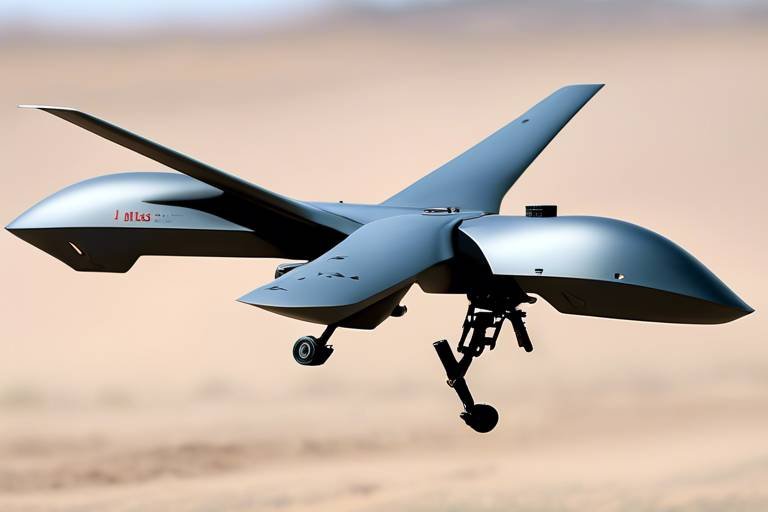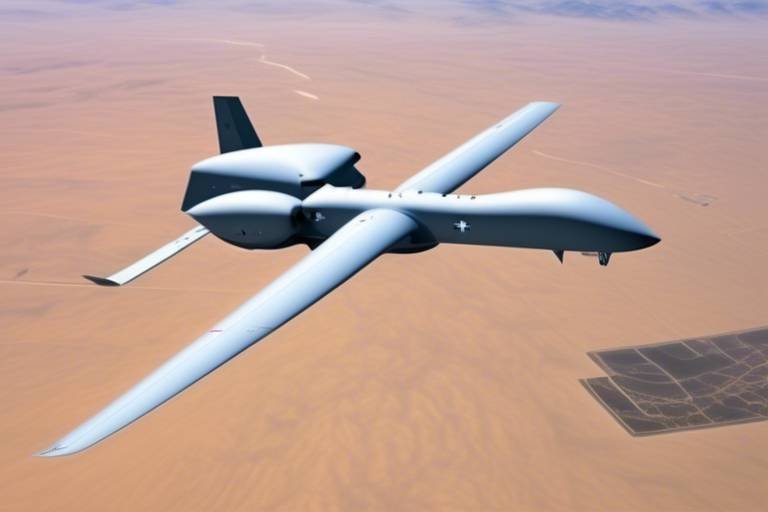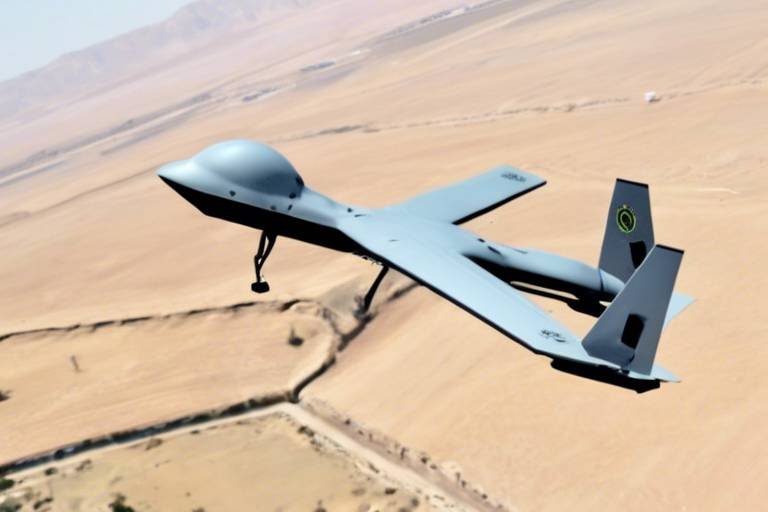Evaluating the Performance of the ROBOTIC TRUCK in Logistics
The logistics sector is undergoing a seismic shift, and at the forefront of this transformation are robotic trucks. These marvels of modern engineering are not just futuristic concepts; they are actively reshaping how goods are transported across the globe. With their ability to operate autonomously, robotic trucks promise to enhance efficiency, cut costs, and ultimately revolutionize supply chain operations. In this article, we will delve into the various aspects of robotic trucks, evaluating their performance and understanding their potential to redefine logistics.
Robotic trucks are revolutionizing logistics by automating transportation processes. These vehicles are designed with cutting-edge technology, enabling them to navigate complex roadways and deliver goods with minimal human intervention. The underlying technology includes artificial intelligence, machine learning, and sensor technologies, all of which work in harmony to ensure safe and efficient operations. Imagine a truck that can think on its feet, adjusting its path in real-time to avoid traffic or obstacles. This is the essence of robotic trucks, and their design reflects a commitment to safety, efficiency, and reliability.
One of the primary advantages of robotic trucks is their efficiency in delivery. These vehicles are equipped with sophisticated systems that allow them to optimize their routes and minimize delivery times. Unlike traditional delivery methods, which often rely on static routes and human decision-making, robotic trucks use advanced algorithms to determine the best path for each journey. This not only speeds up the delivery process but also reduces the overall carbon footprint, making them an environmentally friendly option.
Robotic trucks utilize advanced algorithms for route optimization. These algorithms take into account various factors such as traffic conditions, weather patterns, and road closures. By analyzing this data, robotic trucks can select the most efficient routes, which can lead to significant savings in both time and fuel consumption. For logistics companies, this means reduced operational costs and improved service levels.
By integrating real-time traffic data, robotic trucks can adjust routes dynamically. This capability is crucial in today's fast-paced world, where traffic conditions can change in an instant. For instance, if a robotic truck encounters a traffic jam, it can quickly reroute to avoid delays. This adaptability not only enhances delivery efficiency but also increases customer satisfaction, as goods arrive on time, every time.
Predictive maintenance helps prevent breakdowns, ensuring continuous operations. Robotic trucks employ data analytics to forecast maintenance needs, allowing for timely interventions before issues escalate into costly repairs. By leveraging historical data and real-time monitoring, logistics companies can schedule maintenance during off-peak hours, minimizing disruptions and maximizing uptime.
Robotic trucks can significantly reduce operational costs. While the initial investment may seem daunting, the long-term savings are undeniable. These vehicles operate with lower fuel consumption, require less maintenance, and can work longer hours than human drivers. As a result, companies can expect a substantial return on their investment. To illustrate these savings, consider the following table:
| Cost Factor | Traditional Trucks | Robotic Trucks |
|---|---|---|
| Fuel Costs | High | Lower |
| Maintenance Costs | Moderate | Low |
| Labor Costs | High | Minimal |
| Operational Hours | Limited | Extended |
The introduction of robotic trucks has implications for the workforce in logistics. While these vehicles offer numerous benefits, they also raise questions about job roles and the future of employment in the sector. As robotic trucks take over certain tasks, the landscape of logistics jobs is bound to change.
As robotic trucks take over certain tasks, concerns about job displacement arise. Many fear that automation will lead to widespread unemployment in the logistics sector. However, it's essential to consider that while some roles may become obsolete, new opportunities will inevitably emerge. The key lies in adapting to these changes and embracing the technology rather than resisting it.
While some jobs may be lost, new opportunities will emerge. The logistics workforce can adapt and thrive alongside robotic technology by acquiring new skills. Positions related to the maintenance and programming of robotic trucks will become increasingly important. Moreover, roles focused on data analysis and logistics management will be in higher demand as companies seek to leverage the data generated by these advanced systems.
- What are robotic trucks? Robotic trucks are autonomous vehicles designed to transport goods without human intervention, utilizing advanced technologies like AI and sensors.
- How do robotic trucks improve efficiency? They optimize routes using advanced algorithms and real-time data, reducing delivery times and fuel consumption.
- Will robotic trucks replace human jobs? While some jobs may be displaced, new roles will emerge that focus on technology management, maintenance, and data analysis.
- What are the cost benefits of using robotic trucks? Robotic trucks typically have lower fuel and maintenance costs, and they can operate longer hours, leading to significant savings in the long run.

Introduction to Robotic Trucks
Robotic trucks are not just a futuristic concept; they are revolutionizing the logistics industry today! These advanced vehicles are designed to automate the transportation process, making supply chains more efficient and reliable. Imagine a world where trucks can navigate roads without human intervention, delivering goods on time and minimizing errors. Sounds like science fiction? Well, it's happening right now!
The design of robotic trucks is a blend of cutting-edge technology and innovative engineering. Equipped with sensors, cameras, and sophisticated software, these vehicles can perceive their environment much like a human driver. They utilize a combination of Artificial Intelligence (AI) and machine learning to make decisions in real-time, ensuring they adapt to changing conditions on the road. For instance, if a robotic truck encounters unexpected road construction, it can quickly reroute to avoid delays, showcasing its remarkable adaptability.
Moreover, the functionality of robotic trucks extends beyond mere transportation. They are integrated with logistics management systems that allow them to communicate with warehouses, distribution centers, and even other vehicles. This interconnectedness enables a seamless flow of information, which is crucial for optimizing supply chain operations. The technology driving these trucks includes GPS navigation, LiDAR mapping, and real-time data analytics, all working together to enhance their performance.
But what does this mean for the logistics sector? The introduction of robotic trucks signifies a major shift in how goods are transported. With the potential to operate 24/7 without fatigue, these vehicles promise to enhance delivery speed and reliability. As we delve deeper into the capabilities of robotic trucks, it's clear that they are not just a trend; they are the future of logistics.
- What are robotic trucks? Robotic trucks are autonomous vehicles designed to transport goods without human drivers, utilizing advanced technology for navigation and operation.
- How do robotic trucks improve efficiency? They optimize delivery routes, adapt to real-time traffic conditions, and operate continuously, reducing delivery times significantly.
- Are robotic trucks safe? Yes, robotic trucks are equipped with numerous safety features, including sensors and cameras, which allow them to navigate safely and avoid obstacles.
- Will robotic trucks replace human drivers? While they may take over certain tasks, there will still be a need for human oversight and new job roles in managing these technologies.

Efficiency in Delivery
When we think about logistics, the first thing that comes to mind is the intricate dance of transporting goods from one place to another. Robotic trucks are stepping into this world, bringing a wave of innovation that makes traditional delivery methods look almost archaic. Imagine a world where trucks can navigate through traffic with the precision of a seasoned driver, all while cutting down on delivery times and costs. This is not just a dream; it's the reality that robotic trucks are creating in the logistics sector.
One of the primary advantages of robotic trucks is their ability to optimize routes. These vehicles are equipped with advanced algorithms that analyze various factors, including traffic patterns, road conditions, and delivery schedules, to determine the best possible routes. This means no more sitting in traffic for hours or taking roundabout paths. Instead, robotic trucks can find the quickest and most efficient way to deliver goods, which is a game changer for businesses aiming to meet tight deadlines.
So, how exactly do these trucks achieve such incredible efficiency? The secret lies in their route optimization techniques. By utilizing sophisticated algorithms, robotic trucks can calculate the most efficient paths in real-time. This not only saves time but also reduces fuel consumption, which is a significant cost factor in logistics. For instance, a study found that companies using robotic trucks saw a reduction in fuel costs by up to 30% compared to traditional delivery methods. That's a substantial saving!
Another fascinating aspect of robotic trucks is their ability to integrate real-time traffic data. Imagine a truck that can adjust its route on the fly, avoiding traffic jams and road closures. This capability is made possible through advanced GPS technology and data analytics. By constantly monitoring traffic conditions, robotic trucks can reroute themselves to ensure timely deliveries. This dynamic adjustment not only enhances delivery efficiency but also contributes to a smoother flow of goods in the supply chain.
But what happens when a truck breaks down? That's where predictive maintenance comes into play. Robotic trucks are designed to monitor their own performance and identify potential issues before they become serious problems. By analyzing data from various sensors, these trucks can forecast maintenance needs and schedule repairs proactively. For logistics companies, this means fewer unexpected breakdowns and more reliable delivery schedules. In fact, businesses that implement predictive maintenance can increase their operational uptime by up to 20%.
In summary, the efficiency of robotic trucks in delivery is a multifaceted advantage that encompasses route optimization, real-time traffic analysis, and predictive maintenance. As these technologies continue to evolve, we can expect to see even more improvements in delivery times and cost savings, making robotic trucks a vital component of the future logistics landscape.
- What are robotic trucks? Robotic trucks are automated vehicles designed to transport goods without human intervention, utilizing advanced technologies for navigation and operation.
- How do robotic trucks optimize delivery routes? They use sophisticated algorithms that analyze various factors such as traffic conditions, road closures, and delivery schedules to find the most efficient routes.
- What is predictive maintenance in robotic trucks? Predictive maintenance involves monitoring the truck's performance through data analytics to identify potential issues before they lead to breakdowns.
- Can robotic trucks reduce operational costs? Yes, robotic trucks can significantly lower operational costs by optimizing routes and reducing fuel consumption.

Route Optimization Techniques
Route optimization is the backbone of the efficiency that robotic trucks bring to the logistics industry. Imagine a delivery truck navigating through a bustling city, weaving in and out of traffic, all while delivering packages on time. This is made possible through advanced algorithms that analyze numerous variables to determine the best possible routes. These techniques are not just about finding the shortest path; they also consider factors such as traffic conditions, weather, and even road closures. In essence, robotic trucks are like seasoned navigators, constantly recalibrating their course to ensure timely deliveries.
At the heart of these optimization techniques is a combination of machine learning and real-time data analysis. By utilizing historical data and current traffic conditions, robotic trucks can predict potential delays and adjust their routes accordingly. For instance, if a major intersection is congested due to an accident, the truck can instantly reroute to avoid that area, saving precious time. This ability to adapt on the fly is what sets robotic trucks apart from traditional delivery methods.
To further illustrate the impact of route optimization, consider the following table that compares traditional delivery methods with robotic trucks:
| Aspect | Traditional Delivery | Robotic Trucks |
|---|---|---|
| Route Planning | Manual planning, often based on experience | Automated, data-driven planning |
| Response to Traffic | Limited ability to adapt | Real-time adjustments |
| Fuel Efficiency | Higher fuel consumption | Optimized routes reduce fuel use |
| Delivery Times | Variable and often unpredictable | Consistently on-time deliveries |
Moreover, robotic trucks employ predictive analytics to enhance their route optimization capabilities. By analyzing patterns in traffic data and delivery trends, these vehicles can forecast the best times to deliver to specific areas, further streamlining the logistics process. This predictive approach is akin to having a crystal ball that reveals the most efficient paths, allowing for smarter planning and execution.
In addition to these advanced techniques, robotic trucks also benefit from collaborative algorithms. These algorithms allow multiple trucks to communicate with each other, sharing information about traffic conditions and potential obstacles. Picture a convoy of robotic trucks, each one learning from the others’ experiences and adjusting their routes in real-time. This not only enhances individual truck efficiency but also optimizes the entire fleet's operations.
In conclusion, the route optimization techniques employed by robotic trucks are a game-changer in the logistics sector. They leverage cutting-edge technology to ensure efficient, timely, and cost-effective deliveries, transforming the way we think about transportation in the supply chain. As these technologies continue to evolve, we can only anticipate even greater advancements that will redefine logistics as we know it.
- How do robotic trucks optimize their routes? Robotic trucks use advanced algorithms and real-time data analysis to determine the most efficient delivery routes, adapting to changing conditions like traffic and weather.
- What role does real-time traffic data play in route optimization? Real-time traffic data allows robotic trucks to dynamically adjust their routes to avoid congestion and delays, ensuring timely deliveries.
- Can robotic trucks communicate with each other? Yes, robotic trucks can use collaborative algorithms to share information about traffic conditions and obstacles, enhancing overall fleet efficiency.
- Are there cost savings associated with using robotic trucks? Absolutely! Robotic trucks can significantly reduce operational costs through optimized routes, lower fuel consumption, and increased delivery efficiency.

Real-time Traffic Analysis
In the fast-paced world of logistics, has emerged as a game-changer for robotic trucks. Imagine a delivery vehicle that can react to traffic conditions as they happen, making instantaneous decisions to ensure timely deliveries. This is not just a dream; it’s the reality brought forth by sophisticated technology. By integrating real-time traffic data into their operational systems, these robotic trucks can navigate through congested routes and avoid potential delays, which is crucial for maintaining efficiency in supply chains.
How does this work, you ask? Well, these trucks are equipped with advanced sensors and GPS technology that constantly monitor traffic patterns. They collect data from various sources, including traffic cameras, GPS signals, and even other vehicles. This data is then analyzed using complex algorithms that can predict traffic conditions and suggest alternative routes. The result? A reduction in delivery times and an increase in overall productivity.
To illustrate the impact of real-time traffic analysis, consider the following benefits:
- Dynamic Routing: Robotic trucks can change their routes on the fly, ensuring they take the fastest path available.
- Reduced Fuel Consumption: By avoiding traffic jams, these vehicles can save significant amounts of fuel, lowering operational costs.
- Increased Customer Satisfaction: Faster deliveries lead to happier customers, which is essential in today’s competitive market.
Moreover, the integration of real-time traffic analysis not only enhances the efficiency of deliveries but also contributes to safety on the roads. By avoiding congested areas and potential hazards, robotic trucks can minimize the risks associated with accidents, making the logistics process smoother and more reliable. This proactive approach to navigation is akin to having a seasoned driver who knows the ins and outs of the city, always aware of the best routes to take.
As we look to the future, the importance of real-time traffic analysis will only grow. With urban areas becoming increasingly congested, the ability to adapt to changing conditions in real-time will be vital for logistics companies aiming to stay ahead of the curve. In summary, real-time traffic analysis is not just a feature of robotic trucks; it is a fundamental aspect that enhances their operational capabilities, ensuring they deliver on their promise of efficiency and reliability.
- How does real-time traffic analysis improve delivery times?
By allowing robotic trucks to adjust their routes based on current traffic conditions, they can avoid delays and take the most efficient paths. - What technology is used for real-time traffic analysis?
Robotic trucks use a combination of GPS, sensors, and data analytics to gather and interpret traffic information. - Can real-time traffic analysis reduce operational costs?
Yes, by optimizing routes and reducing fuel consumption, companies can significantly lower their operational expenses.

Predictive Maintenance
Predictive maintenance is a game-changer in the world of logistics, especially when it comes to robotic trucks. Imagine having a crystal ball that tells you exactly when your vehicle is likely to need repairs. That's essentially what predictive maintenance does! By leveraging data analytics, robotic trucks can monitor their own performance in real-time, identifying potential issues before they escalate into costly breakdowns. This proactive approach not only ensures that the trucks remain operational but also significantly reduces downtime, which can be a major hurdle in the fast-paced logistics industry.
At the heart of predictive maintenance is the collection and analysis of data from various sensors embedded within the robotic trucks. These sensors track a multitude of variables, such as engine temperature, brake performance, and tire pressure. By analyzing this data, companies can forecast when a component is likely to fail and schedule maintenance accordingly. This method contrasts sharply with traditional maintenance schedules, which often rely on fixed intervals that may not align with the actual wear and tear on the vehicle.
To illustrate the effectiveness of predictive maintenance, consider the following table that outlines the differences between traditional and predictive maintenance strategies:
| Aspect | Traditional Maintenance | Predictive Maintenance |
|---|---|---|
| Maintenance Scheduling | Fixed intervals | Based on data analysis |
| Downtime | Unpredictable | Minimized |
| Cost | Higher due to emergency repairs | Lower due to planned maintenance |
| Operational Efficiency | Variable | Consistently high |
This table clearly demonstrates that predictive maintenance not only enhances the lifespan of the robotic trucks but also contributes to a more efficient logistics operation overall. By ensuring that vehicles are always in optimal condition, companies can maintain a steady flow of goods, ultimately leading to improved customer satisfaction.
Moreover, the integration of predictive maintenance into the operational workflow fosters a culture of continuous improvement. As data is collected and analyzed over time, logistics companies can refine their maintenance strategies, leading to even greater efficiencies. The ability to predict and prevent mechanical failures translates into a more reliable and robust supply chain, which is essential in today’s competitive market.
In conclusion, predictive maintenance is not just a technical upgrade; it’s a strategic advantage. By embracing this innovative approach, logistics companies can stay ahead of the curve, ensuring that their robotic trucks are always ready to hit the road and deliver goods efficiently. The future of logistics is bright, and predictive maintenance is lighting the way!
- What is predictive maintenance? Predictive maintenance is a proactive approach to maintaining equipment by using data analytics to predict when maintenance should be performed.
- How does predictive maintenance benefit logistics? It reduces downtime, lowers maintenance costs, and increases the operational efficiency of vehicles.
- What data is used in predictive maintenance? Data from various sensors, including engine performance, temperature, and tire pressure, is analyzed to forecast maintenance needs.
- Is predictive maintenance expensive to implement? While there may be initial costs for technology and data systems, the long-term savings from reduced downtime and maintenance costs typically outweigh these expenses.

Cost-effectiveness of Robotic Trucks
The cost-effectiveness of robotic trucks is a game-changer in the logistics sector, reshaping how businesses approach transportation and delivery. Imagine a world where delivery costs are slashed, operational efficiency is maximized, and profits soar—this is the reality that robotic trucks are bringing to the table. One of the most compelling reasons companies are investing in this technology is the potential for substantial savings in operational costs. With traditional trucks, expenses can quickly add up due to factors like fuel consumption, driver wages, and maintenance. In contrast, robotic trucks minimize these costs significantly.
For instance, robotic trucks are designed to operate with greater fuel efficiency, utilizing state-of-the-art technology to ensure they consume less fuel than their human-driven counterparts. This not only reduces the overall expenditure on fuel but also contributes to a smaller carbon footprint, aligning with the growing demand for sustainable logistics solutions. According to recent studies, companies that have integrated robotic trucks into their fleets have reported fuel savings of up to 30%. When you consider the skyrocketing fuel prices, this is not just a minor benefit—it’s a major financial advantage.
Moreover, the elimination of driver-related costs is another significant factor. While the initial investment in robotic technology can be substantial, the long-term savings on salaries, benefits, and training for human drivers can lead to a rapid return on investment (ROI). A recent analysis revealed that companies could save an average of $100,000 annually per truck when switching to robotic systems. This figure includes not only the direct savings from wages but also indirect savings from reduced insurance costs and liability risks associated with human drivers.
Another aspect to consider is the maintenance costs. Robotic trucks are equipped with advanced sensors and monitoring systems that allow for predictive maintenance. This means that instead of waiting for a truck to break down, companies can anticipate when maintenance is needed and address issues before they escalate. This proactive approach results in fewer breakdowns, less downtime, and ultimately, lower maintenance costs. The ability to keep vehicles on the road longer without unexpected repairs is invaluable in the fast-paced world of logistics.
To illustrate the financial benefits further, let’s take a look at a comparison table:
| Cost Category | Traditional Trucks | Robotic Trucks |
|---|---|---|
| Fuel Costs | $50,000/year | $35,000/year |
| Driver Salaries | $60,000/year | $0 |
| Maintenance Costs | $20,000/year | $10,000/year |
| Total Annual Costs | $130,000 | $45,000 |
As depicted in the table, the total annual costs of operating robotic trucks can be dramatically lower compared to traditional trucks. This stark contrast highlights why so many companies are pivoting toward automation in their logistics operations.
In conclusion, the cost-effectiveness of robotic trucks is not just about saving money; it’s about reimagining logistics in a way that enhances productivity and sustainability. As businesses continue to seek ways to cut costs and improve their bottom line, robotic trucks stand out as a viable solution that promises not only immediate savings but also long-term benefits. With advancements in technology, the future of logistics looks brighter and more efficient than ever.
- What are robotic trucks? Robotic trucks are autonomous vehicles designed to transport goods without human drivers, utilizing advanced technology for navigation and operation.
- How do robotic trucks reduce costs? They lower costs through improved fuel efficiency, elimination of driver salaries, and reduced maintenance expenses due to predictive technology.
- Are robotic trucks safe? Yes, robotic trucks are equipped with advanced safety features and sensors that allow them to navigate safely and efficiently on the road.
- What is the future of robotic trucks in logistics? The future looks promising, with ongoing advancements in technology likely to enhance their capabilities and further reduce costs.

Impact on Workforce
The introduction of robotic trucks into the logistics sector is not just a technological advancement; it’s a seismic shift that reverberates through the workforce. As we embrace these automated marvels, it's crucial to consider how they reshape job roles, alter skill requirements, and ultimately redefine the nature of work in logistics. The landscape is changing, and while it may seem daunting, this evolution also presents a unique opportunity for growth and adaptation.
First and foremost, we must address the elephant in the room: job displacement. With robotic trucks taking over tasks traditionally performed by humans, many workers may feel threatened by the prospect of losing their jobs. This concern is valid, especially in a sector where driving and transport roles have long been the backbone of operations. However, it's essential to recognize that while some positions may become obsolete, the need for human oversight and intervention remains. Robotic trucks still require skilled personnel for monitoring, maintenance, and management, creating a demand for new roles that focus on technology integration.
To put this into perspective, let’s consider a few key points:
- Job Transformation: Rather than disappearing, many jobs will evolve. For instance, truck drivers may transition into roles as logistics coordinators or fleet managers, overseeing multiple robotic units.
- Skill Enhancement: The workforce will need to adapt by acquiring new skills. Training programs focused on technology and data analytics will become essential, allowing workers to thrive in a tech-driven environment.
- New Opportunities: The rise of robotic trucks will likely create new job categories. Roles in robotics maintenance, software development, and data analysis will become increasingly important.
Moreover, the implementation of robotic trucks can lead to enhanced productivity and efficiency in logistics operations. This increase in operational capability could result in business growth, which in turn may lead to job creation in other areas of the supply chain. For example, as companies save on transportation costs due to the efficiency of robotic trucks, they might invest those savings into expanding their workforce in areas such as customer service, inventory management, and warehouse operations.
It's also worth noting that the integration of robotic technology can improve working conditions for human employees. With robots handling repetitive and strenuous tasks, workers can focus on more complex and rewarding aspects of their jobs, such as problem-solving and strategic planning. This shift not only enhances job satisfaction but also fosters a more engaged and motivated workforce.
In conclusion, while the rise of robotic trucks presents challenges, it also opens doors to new possibilities. The logistics workforce is on the brink of a transformation that demands adaptability and a willingness to learn. By embracing this change, workers can position themselves at the forefront of an exciting new era in logistics.
- Will robotic trucks replace all truck drivers?
Not entirely. While some driving jobs may be affected, many roles will evolve, requiring human oversight and management of robotic systems. - What skills will be in demand in the future logistics workforce?
Skills in technology management, data analysis, and robotics maintenance will be increasingly valuable as the industry evolves. - How can workers prepare for the changes brought by robotic trucks?
Workers can seek training and development opportunities in technology and logistics management to stay competitive in the job market.

Job Displacement Concerns
The rise of robotic trucks in logistics has sparked a significant conversation around job displacement. As these automated vehicles take over tasks traditionally performed by human workers, there are valid concerns about the future of employment in the sector. Will the introduction of these machines lead to widespread job losses, or can we find a way to coexist with this technology? It's a question that looms large over the logistics industry.
Firstly, it's crucial to recognize that while robotic trucks can handle repetitive and physically demanding tasks, they are not designed to replace the entire workforce. Instead, they are more like tools that can enhance productivity and efficiency. For instance, while a robotic truck might manage the transportation of goods, human oversight is still needed for tasks like customer service, quality control, and complex decision-making processes. This means that the nature of work is likely to change rather than disappear entirely.
Moreover, the logistics industry is no stranger to technological advancements. Over the decades, we've seen shifts from manual labor to mechanized processes. Each wave of innovation has raised similar concerns about job security. However, history shows that while some roles may become obsolete, new ones often emerge in their place. For example, the introduction of robotic trucks could lead to a demand for skilled workers who can manage, maintain, and program these vehicles. This shift could create a new landscape of job opportunities that require different skill sets.
To illustrate this point, consider the following potential job roles that could emerge from the adoption of robotic trucks:
- Robotic Fleet Managers: Professionals who oversee the operation of robotic trucks, ensuring they function efficiently and safely.
- Data Analysts: Experts who interpret data collected from robotic trucks to optimize routes and improve overall performance.
- Maintenance Technicians: Skilled workers who specialize in the upkeep and repair of robotic systems.
While it’s understandable to feel apprehensive about the changes that robotic trucks bring, it’s essential to focus on adaptability and resilience. The logistics sector is evolving, and so must the workforce. Companies can help by investing in training programs that equip workers with the necessary skills to thrive in this new environment. By fostering a culture of continuous learning and adaptation, businesses can mitigate the risks associated with job displacement.
In conclusion, while the concerns surrounding job displacement due to robotic trucks are valid, they are not insurmountable. The key lies in embracing change, investing in education and training, and recognizing that technology can serve as an ally rather than an adversary. As we navigate this transition, it's important to keep the dialogue open and ensure that workers feel supported in their journey toward a more automated future.
- Will robotic trucks completely replace human drivers? No, while robotic trucks can handle many driving tasks, human oversight is still necessary for complex decision-making and customer interactions.
- What new jobs can we expect from the rise of robotic trucks? New roles such as robotic fleet managers, data analysts, and maintenance technicians are likely to emerge as the industry evolves.
- How can workers prepare for changes in the logistics industry? Workers can engage in continuous learning and seek training programs that focus on skills relevant to operating and managing robotic technology.

New Opportunities for Workers
This article explores the various aspects of robotic trucks in the logistics sector, assessing their efficiency, cost-effectiveness, and impact on supply chain operations.
Robotic trucks are revolutionizing logistics by automating transportation processes. This section provides an overview of their design, functionality, and the technology that drives their operations.
One of the primary advantages of robotic trucks is their efficiency in delivery. This section examines how these vehicles optimize routes and reduce delivery times compared to traditional methods.
Robotic trucks utilize advanced algorithms for route optimization. This subsection discusses how these techniques enhance operational efficiency and minimize fuel consumption.
By integrating real-time traffic data, robotic trucks can adjust routes dynamically. This part highlights the significance of traffic analysis in improving delivery efficiency.
Predictive maintenance helps prevent breakdowns, ensuring continuous operations. This section details how robotic trucks employ data analytics to forecast maintenance needs.
Robotic trucks can significantly reduce operational costs. This subsection evaluates the financial benefits associated with their implementation in logistics.
The introduction of robotic trucks has implications for the workforce in logistics. This section discusses how these vehicles affect job roles and the need for new skill sets.
As robotic trucks take over certain tasks, concerns about job displacement arise. This part addresses the potential impact on employment in the logistics sector.
While the rise of robotic trucks may seem daunting at first glance, it also opens up a plethora of new opportunities for workers in the logistics sector. As these automated vehicles take over routine driving tasks, the industry is shifting towards roles that require more advanced skills and adaptability. For instance, there will be a growing demand for technicians who can maintain and repair these sophisticated machines. Think about it: just as the advent of computers created a need for IT professionals, robotic trucks are paving the way for a new breed of logistics specialists.
Moreover, the integration of robotic technology into logistics operations will necessitate enhanced data analysis capabilities. Workers will need to interpret data from robotic trucks to optimize routes and improve overall efficiency. This could lead to roles focused on data analytics, where employees assess performance metrics and help companies make informed decisions about their logistics strategies.
Additionally, as companies invest in robotic trucks, there will be a need for training and development programs to help existing workers transition into these new roles. This could involve upskilling current employees to handle the technology or even creating entirely new positions focused on overseeing fleets of robotic vehicles. The logistics sector will likely see an increase in educational partnerships with technical schools and universities to prepare the workforce for these changes.
In essence, while some traditional roles may diminish, the landscape of logistics is evolving. Workers who embrace this change and seek out new skills will find themselves at the forefront of a burgeoning industry. The future may be automated, but it also promises to be filled with exciting opportunities for those willing to adapt.
- Will robotic trucks replace all human jobs in logistics?
No, while some roles may be displaced, new opportunities will arise that require human oversight and advanced skills. - What skills will be in demand with the rise of robotic trucks?
Skills in data analysis, technical maintenance, and logistics management will become increasingly important. - How can workers prepare for changes in the logistics industry?
Workers should seek training programs and upskilling opportunities to stay relevant in the evolving job market.
Frequently Asked Questions
- What are robotic trucks?
Robotic trucks are autonomous vehicles designed to transport goods without human intervention. They utilize advanced technologies such as AI, sensors, and GPS to navigate and optimize delivery routes, making logistics operations more efficient.
- How do robotic trucks improve delivery efficiency?
These trucks enhance delivery efficiency by utilizing sophisticated algorithms for route optimization, allowing them to select the quickest paths, avoid traffic, and reduce delivery times significantly compared to traditional delivery methods.
- What role does real-time traffic analysis play in robotic truck operations?
Real-time traffic analysis is crucial for robotic trucks as it enables them to adapt their routes dynamically based on current traffic conditions. This capability helps in avoiding delays and ensuring timely deliveries.
- Can robotic trucks help reduce operational costs?
Absolutely! Robotic trucks can lower operational costs by minimizing fuel consumption through efficient routing and reducing the need for human drivers, which can lead to significant savings in labor costs.
- Will robotic trucks displace jobs in the logistics sector?
While it's true that robotic trucks may replace certain driving jobs, they also create new opportunities in tech support, vehicle maintenance, and logistics management. The workforce will need to adapt and acquire new skills to thrive in this changing environment.
- What is predictive maintenance in the context of robotic trucks?
Predictive maintenance refers to the use of data analytics to forecast when maintenance is needed for robotic trucks. This proactive approach helps prevent breakdowns, ensuring that operations run smoothly and continuously.
- How can workers adapt to the rise of robotic trucks?
Workers can adapt by upskilling and reskilling to take on new roles that emerge as robotic technology becomes more prevalent. Training in areas such as data analysis, vehicle maintenance, and logistics planning will be essential for future job security.
- What technologies drive the operation of robotic trucks?
Robotic trucks are powered by a combination of technologies, including artificial intelligence, machine learning, GPS navigation, and various sensors. These technologies work together to enable safe and efficient autonomous driving.



















